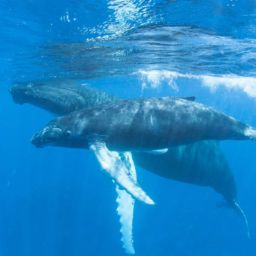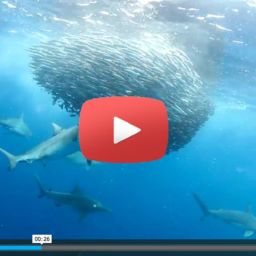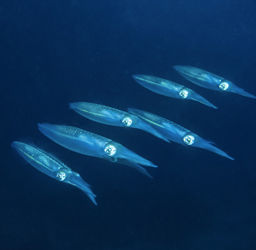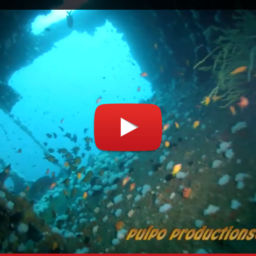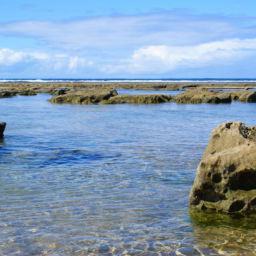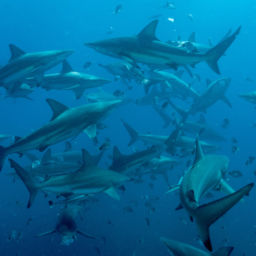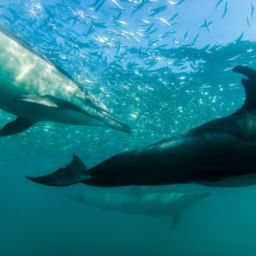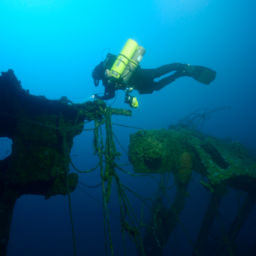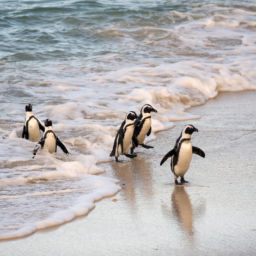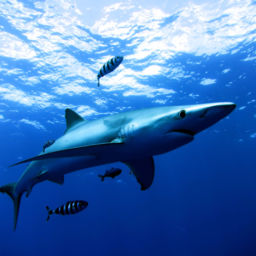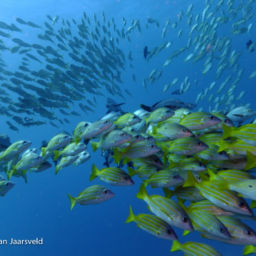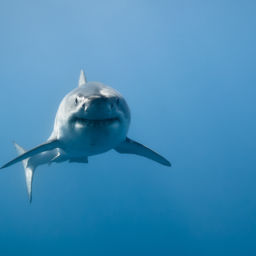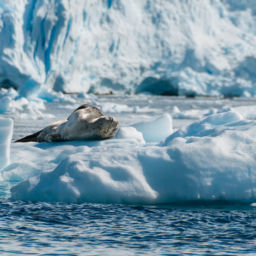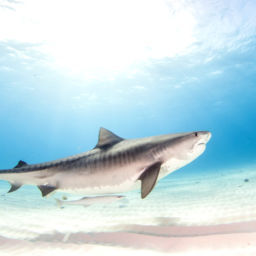Prior to 1938, no living, or recently living, coelacanth (pronounced see-la-kanth) had ever been recorded; all known fossils were at least 65 million years old. That changed a few days before Christmas, in 1938, when a South African fisherman hauled in a peculiar looking catch. Unsure what he had caught, he contacted Marjorie Courtenay-Latimer, curator of East London Museum. After examining the strange fish, Courtenay-Latimer sent a sketch to J.L.B. Smith, a renowned ichthyologist, who identified the animal as a coelacanth.
After the first coelacanth was discovered, Smith began an earnest campaign to locate a second specimen, but it was not until 1952 in the Comoros Islands, off the east coast of Africa, that a second coelacanth was discovered. Like the first, this one was recently deceased. It wasn’t until 1987 that a submersible observed the first living coelacanth, also in the Comoros Islands.
Coelacanths (Latimeria chalumnae) are cousins of Eusthenopterons, believed to be the ancestors of terrestrial animals. Coelacanths differ quite obviously from other fish, most notably by their pectoral and pelvic fins, which look more like legs. The fish can operate one at a time and extend each away from its body. Other notable features include a notochord, a hinged cranium and an electro-sensory rostral organ located in the animal’s nose that it uses for detecting prey.
Coelacanths are large saltwater fish, reaching lengths of 6.5 feet and weighing up to 200 pounds. Their scales are cobalt blue and thick, common among ancient fish species. Deep-reef fish, coelacanths are commonly found between 820 and 2,500 feet. Life expectancy is thought to be over 60 years in the wild, but the few coelacanths that have been observed near the surface have quickly died.
There are two distinct species known today, one from the Comoros Islands, and one from Sulawesi, Indonesia. The Comoros population is estimated to be 1,000 animals; there are no estimates on the population size of the Sulawesi coelacanths, but it likely as small as the Comoro Islands population. The International Union for Conservation of Nature and Natural Resources (IUCN) Red List classifies them as critically endangered, and the Convention on International Trade in Endangered Species of Wild Fauna and Flora (CITES) classifies them as an Appendix I species.
In October 2000, technical divers in Sodwana Bay, off the coast of St. Lucia in South Africa, encountered three coelacanths at 320 feet, which encouraged them to form a dive team focused on locating the animals. SA Coelacanth Expedition 2000 was in the water again a month later in an attempt to find coelacanths, and on their second day of diving, in 350 feet of water, the team saw three coelacanths swimming with their heads down and their caudal fins up, appearing to feed from cavern ledges.
The successful expedition was quickly overshadowed by the death of one of the dive members. While assisting an unconscious diver to the surface, 34-year-old Dennis Harding suffered from a suspected cerebral embolism, the result of an uncontrolled ascent. Harding was not the first diver to perish in the quest to locate coelacanths; in 1998, 46-year-old Riann Bouwer died while performing a technical dive in search of the elusive fish. The cause of death was thought to be an equipment malfunction that caused him to surface. While at the surface, it is thought that Bouwer was negatively buoyant and submerged again, but the exact cause of his death is unknown, as his body was never recovered. A third person died in 2001 while the team was preparing for another expedition, when Erna Smith fell victim to decompression sickness.
Coelacanths are thought to live in the relatively shallow waters of Sodwana Bay because the waters are colder at shallower depths than in other known coelacanth locations. If this hypothesis proves true, it may help explain why coelacanths caught in fishing nets soon die — they are unable to withstand temperatures above 68 degrees F.
Outside of TV and Internet exposure, it’s doubtful that any of us will ever see a coelacanth. Diving to their depth requires extensive training and preparation, and the South African government now requires divers who are seeking coelacanths to obtain special permits. And although most of us can’t dive with coelacanths, it’s enough just knowing that an animal that roamed the seas over 400 million years ago is still swimming today.
By Christina Albright-Mundy


